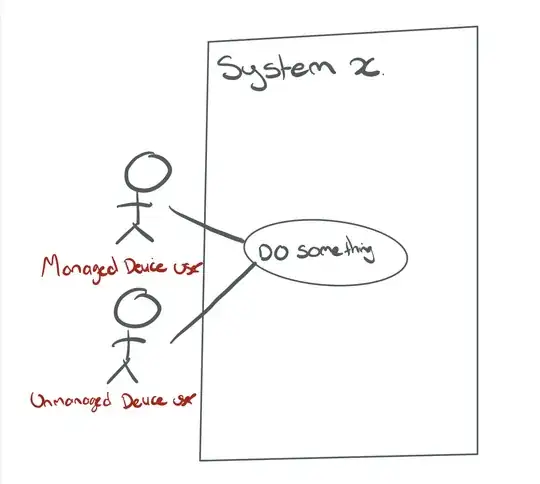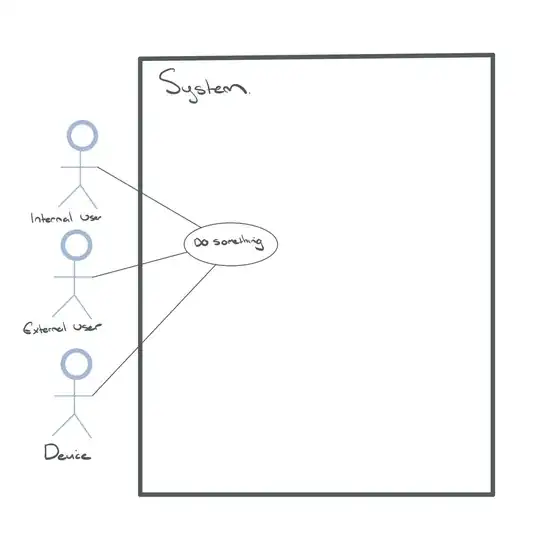Is it that simple?
From your narrative, I understand that:
- you have one actor,
User, with one use-case do something
- the actor can be corporate or external (this sounds like a descriptive comment about the actor)
- the actor may use a managed device or an unmanaged device (in your narrative, this sounds like a constraint for the association between the user and the use case)
Keep the diagram as simple as possible. Comments and constraints can be added to the use-case model without a combinatorial explosion.
More complex situation
Your diagram is certainly simplified. In a more complex model, it is probable that different actors would interact with different use cases.
A natural choice could be to have a corporate user and an external user, especially if these users would have different roles (e.g. external users are customers, or external stakeholders with a specific role).
Of course, it is possible that an internal user may not interact, or may interact slightly differently with a use-case if an unmanaged device is used. But this would stay a constraint as explained above.
Could devices influence the actors?
To the very dry and formal definition of UML 2.5 specs, I prefer the more understandable definition of Ivar Jacobson, the inventor of UC:
A use case is all the ways of using a system to achieve a particular goal for a particular user. Taken together the set of all the use cases gives you all of the useful ways to use the system, and illustrates the value that it will provide.
Consequence: the choice of use-cases should be driven by user goals. The device may influence what an actor can do in the interaction (e.g. dangerous operations forbidden on a smartphone because of the risk of error, or from an unmanaged device because of the security risk), but not what he/she may want to do.
In other words, devices are only means to interact with the system, that can constrain its use. But they do not define the goals of the user.
Final word
Ultimately, the goal-driven principle is only an advice. I insisted on it, because your narrative suggested that the real difference was between corporate and external users, and corporate users using unmanaged device are just constrained for technical reasons.
But UML doesn't require the use-cases to be goal driven. So if it makes sense to you, you may very well decide to go on with your first diagram. This is legit ans is also used when different user-interfaces offer different functionalities.

